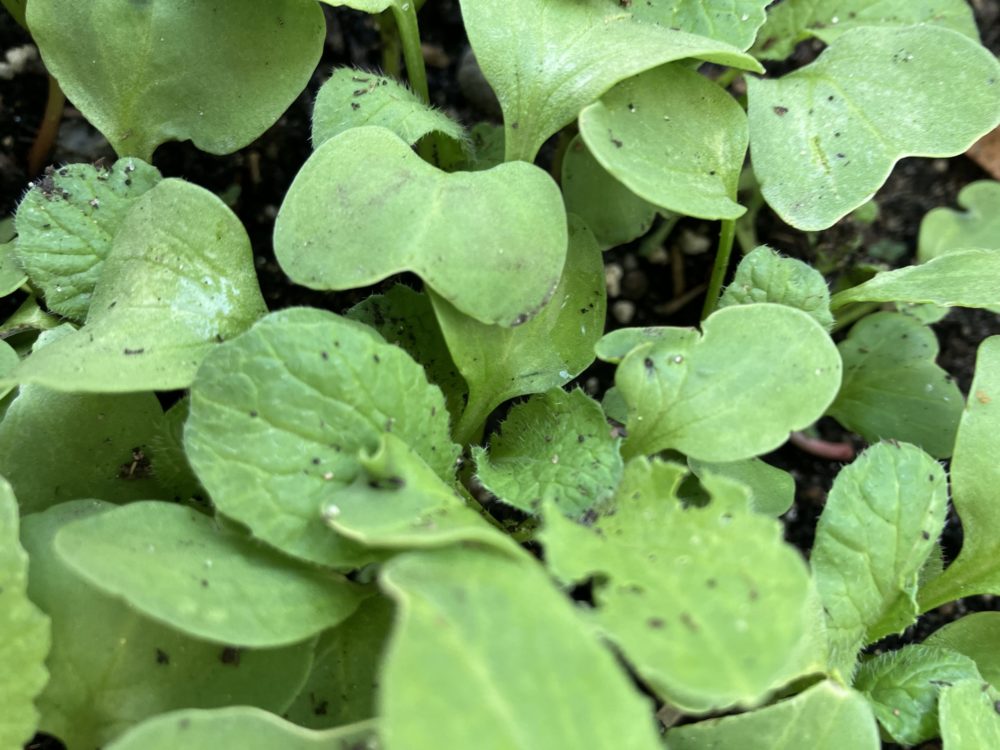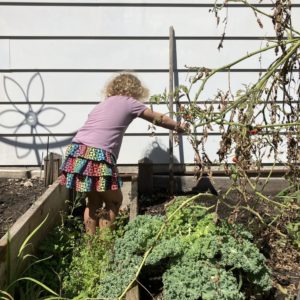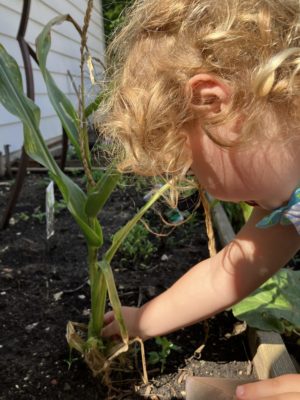We’re Gardeners!

That’s what my four-year-old granddaughter says as we plant fall crops. We had spinach, radish, lettuce and pea seeds left from spring, and when the string of 90-100 degree days paused and the rains came, we put them in the ground. The rains are coming in time to give our baby plants a great start!

These are the radish seedlings. Photo is by June.
 I had rubber-banded the seed packets together. June took them apart and spread them out just inside the kitchen door. I scratched up the soil in our raised beds with her little rake, and she brought the seed packets out one at a time. She made me guess what they were, which was pretty easy since I could see read the names.
I had rubber-banded the seed packets together. June took them apart and spread them out just inside the kitchen door. I scratched up the soil in our raised beds with her little rake, and she brought the seed packets out one at a time. She made me guess what they were, which was pretty easy since I could see read the names.
 After she sprinkled the seeds in the garden I used the rake again to spread them out and spread some dirt over them.
After she sprinkled the seeds in the garden I used the rake again to spread them out and spread some dirt over them.
Then she put the packets on little stakes and pushed them into the ground.
We’re broad stroke gardeners for sure, but I always tell folks who work with kids in gardens, it’s not about the plants. It’s about the kids.
It’s so important for them to get their hands dirty. Feel the earth under the soles of their feet. Connect with nature and learn where our food comes from. Their sense of mastery as they see the plants grow. The wonder they feel as they taste the produce they’ve grown. These are priceless, and crucial to the future of our planet and all that grows upon it.
Inspired by Robin Wall Kimmerer’s book, Braiding Sweetgrass, we planted “the three sisters” earlier in the summer. There’s nothing June likes better than stories of sisters. According to legends of indigenous tribes from mesoamerica, celestial beings brought three seeds to the hungry people.
They hadn’t developed agriculture to take control over their food supplies. So three maidens came to them with corn or maize, beans and squash. The oldest sister was tall with golden hair.
 Her corn seed grew fast with strong roots in the soil. Planted at the same time, the bean seed grew more slowly and twined around her older corn sister, taking her lead and using her strong stalk to wind her way toward the sun. The bean played the important role of fixing nitrogen in the soil to nourish her sisters.
Her corn seed grew fast with strong roots in the soil. Planted at the same time, the bean seed grew more slowly and twined around her older corn sister, taking her lead and using her strong stalk to wind her way toward the sun. The bean played the important role of fixing nitrogen in the soil to nourish her sisters.
The baby squash seed grew even more slowly, and crawls around on the ground to shade and cool the roots of her sisters. Come summer, the beans feed the people; some are dried to last through the winter. The corn ripens and hardens. It can be ground into flour for bread.
The squash baby takes longest for her fruit to ripen but it keeps all winter, providing important nutrients for the cold months when food is scarce.
This summer was brutal, and only one of our “big sisters” survived. But she developed a tassel, and finally three little ears. Today June harvested the first ear, and we tasted it. I thought it was sweet and tasty, but June was not a fan.
